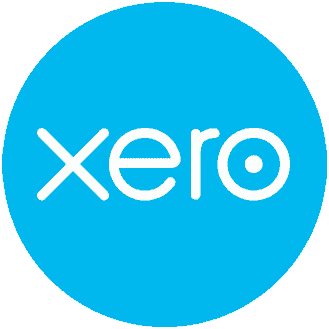Bright-line tax – does it affect you?
A real estate agent recently told us that bright-line tax is simple – it is far from it! We now have multiple iterations of the bright-line rules and multiple different exemptions. In this article, we try to simplify how these rules may affect you. We also outline examples where landowners have been tripped up by the unknown!
What is bright-line tax?
What is Bright-line tax? If you acquired a property on or after 27 March 2021, and dispose of it within 10 years, the bright-line rules will apply to the sale of that property, and any gains you made will be taxable unless an exemption applies. If you acquired a property before this date, the bright-line rules may still apply, but they are slightly different.
Basically, the bright-line rules mean if you sell a residential property you have owned for less than 10 years you may have to pay tax it. This is the bright-line property rule and it also applies to New Zealand tax residents who buy overseas residential properties. You could say it’s New Zealand’s version of a capital gains tax.
The bright-line test does not apply to your family home or inherited property, or to residential properties used for business or for farmland (provided you meet the criteria). If you used your property as your main home 100% of the time during the bright-line period, the main home exclusion should apply. When you sell, you will not pay tax on any gain on the sale.
Under the new rules, a transfer of your main family home may continue to be exempt in certain circumstances, however, ‘change-of use’ rules have been introduced. This means that gains on a sale may be taxed if you haven’t used the property as your home for the entire time.
Let’s look at some real-life examples where we have advised clients. These examples show just how complicated the bright-line rules can be, and why it is so important to get advice.
Example One – A lifestyle block

A lifestyle block of 2 ha. Approximately 1.5ha of the land is used for grazing cattle and the remainder for the main home. The lifestyle block doesn’t qualify for the main home exemption because it was not used predominantly as the main home (1.5ha used for grazing). It doesn’t qualify for farmland exemption because the amount of land is not big enough to support a farming business. Under the new main home exemption, you may be able to claim the main home exemption on that area that is used for the main home. However, the main home exemption is not available where home is owned in a company. The balance of the land would still be taxed under the bright-line rules.
Example Two – Multiple lifestyle blocks – how does brightline tax apply?
Multiple lifestyle blocks are used in a kiwifruit operation. The kiwifruit orchard business is held in one company, the land in another company. The kiwifruit orchard business company leased the land from the land-owning company.

Issue: Lifestyle blocks with small orchards (approx. 1ha each) were not used in a farming operation carried on by the landowner, i.e., the landowner was carrying on a leasing business in that it leased the land to the orchard company.
Because the lifestyle blocks were not individually capable of being used in a farming operation, nor used in a farming business by the landowner, they were not treated as farmland for the purpose of the farmland exemption. The exemption did not apply.
Sale of the blocks were taxable under the Bright-line Rules.
Example Three – House bought through trust

A family was gifted $2m to purchase a home. They set up a trust to buy the home. The person making the gift gifted the funds directly to the trust. By doing this, the donor became the “Principal Settlor”. Because the Principal Settlor had their own home, the trust could not qualify for a main home exemption.
If the family sold their home within the ten year bright-line period, the gain would be taxed. They could not qualify for the main home exemption, even though they lived in their home the entire time. This is because of the way the original purchase was structured.
Example Four – Transfer of shares in a look-through company (LTC)

A client, with rental income, wanted to minimise their tax bill so it went onto the Companies Office website and changed the shareholding percentages in the LTC. This directed the income to one half of the married couple and reduced the overall tax bill on the rental income. However, this triggered tax on the change in percentage of ownership of the residential rental owned by the LTC and restarted the bright-line date for that share.
We have also seen clients do this where there are matrimonial issues – resulting in the forfeiture of a significant number of imputation credits.
The lesson here – never change shareholding without getting tax advice first.
Example Five – Sale of shareholding in an ordinary company

Sale of 50% of the shares in an ordinary company that owned residential rental property. Because more than 50% of the company assets were residential land, this was treated as a residential land rich company. The change of 50% of the shareholding triggered a tax liability for the selling shareholder. Then we had to work through what this meant for the company.
Example Six – Small thoroughbred operation – exempt from brightline-tax?

A small thoroughbred operation on a 2.5ha block. Again, couldn’t qualify for the main home exemption because the land was not predominantly used for the main home. The question was whether the thoroughbred operation was sufficient to be treated as a farming business so as to qualify for the farmland exemption.
Example Seven – Mixed use commercial property

A client purchased a commercial property with commercial on the ground floor and a residential apartment upstairs. The residential apartment was rented out.
The question was whether a sale of this property, within the bright-line period, would be taxed under the bright-line rules. Remember there are exemptions for both the family home, and for business premises.
The business premises exemption requires the property to be used predominantly as a business premises. In this example, because the stairway and entrance were used exclusively for the residential apartment, more than 50% of the property was used as a residential rental property.
This property did not qualify for the business premises exemption.
The main home exemption would not apply because the apartment was rented out.
If the property is sold within the bright-line period, the entire property sale would be taxed under the bright-line rules.
Example Eight – Parents helping children to buy homes – a bright-line tax trap!

Many parents help their children buy their first homes. Banks are now largely insisting that these parents are registered on the title as owners along with their children.
Once the property has increased in value, and the children can support the full mortgage, the parents often transfer their interest in the property to the children at their original cost. Generally, the parents are not trying to earn a capital gain on the property. They are just trying to help their child onto the property ladder. Properties jointly owned by parents and their children are being caught when they “transfer” their share of the property to the child. Even if they transfer it at cost, there is a deemed market value transaction. The parents are unable to apply the main home exemption because they did not live in it. Thus, the IRD is asking where the tax is on the transfer to the children.
Example Nine – Main home exemption ?

You can use the main home exemption up to twice in a two-year period, but not if you have a regular pattern of doing so. We are starting to see questions from our clients as to whether the main home exemption will be available. Although the client may have spread the transactions out so that they do not have more than two sales in a two-year period, where they have already used the main home exemption a number of times it is starting to look like a regular pattern. In this instance the Inland Revenue may question entitlement to the exemption. We recommend you discuss this with us prior to selling.
As you can see, it is a complex area with no simple answer – it depends on your circumstances each time. The good news is that we are using the new rollover exemptions a lot to allow restructuring of properties into and out of trusts that we couldn’t previously do!
Please get in contact with us to discuss your circumstances and how we may be able to help you.
The post Bright-line tax – does it affect you? appeared first on .













